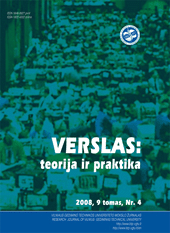Kompleksinio mokesčių sistemos vertinimo rodiklių sistema
A System of Indicators for the Complex Evaluation of the Tax System
Author(s): Juozas Bivainis, Ilona SkačkauskienėSubject(s): Economy
Published by: Vilnius Gediminas Technical University
Keywords: tax system; systematic analysis; multicriteria evaluation
Summary/Abstract: The main problem examined in the current article is the evaluation of tax system. It is suggested that tax systems should be evaluated through the hierarchical evaluation system consisting of primary, partially-integrated and complex-integrated indicators. Primary non-recurrent indicators are classified into three groups and aimed at evaluating a tax system through the prism of a certain aspect. The system is built taking into consideration the requirements of consistency, comparability and simplicity, and aimed at objective and accurate evaluation of tax systems. The synthesis of partially integrated indicators creates preconditions for complex evaluation of tax systems enabling identification of the quality of tax systems and comparison of tax systems of various countries. Complex tax system evaluation provides with a possibility to conduct a systematic analysis and to generate a quantitative estimate. The recommended complex tax system evaluation creates preconditions to analyse tax systems as a uniform totality, to identify their standing in various aspects correlated in quantitative terms, and to carry out dynamic and comparative analyses. Interstate comparative analysis of tax systems creates preconditions to reveal relevant quality of tax systems in various countries, to crystallise out the best practices that could be used for improvement of the quality of the tax system in the country at issue. Also, the evaluation system could be adapted to various needs of the evaluator: classification of indicators into groups enables elimination of some indicators or introduction of new ones without destroying the established system of significance of the indicators, simply by adjusting significance levels within the group.
Journal: Verslas: teorija ir praktika
- Issue Year: 2009
- Issue No: 4
- Page Range: 298-307
- Page Count: 10
- Language: Lithuanian

